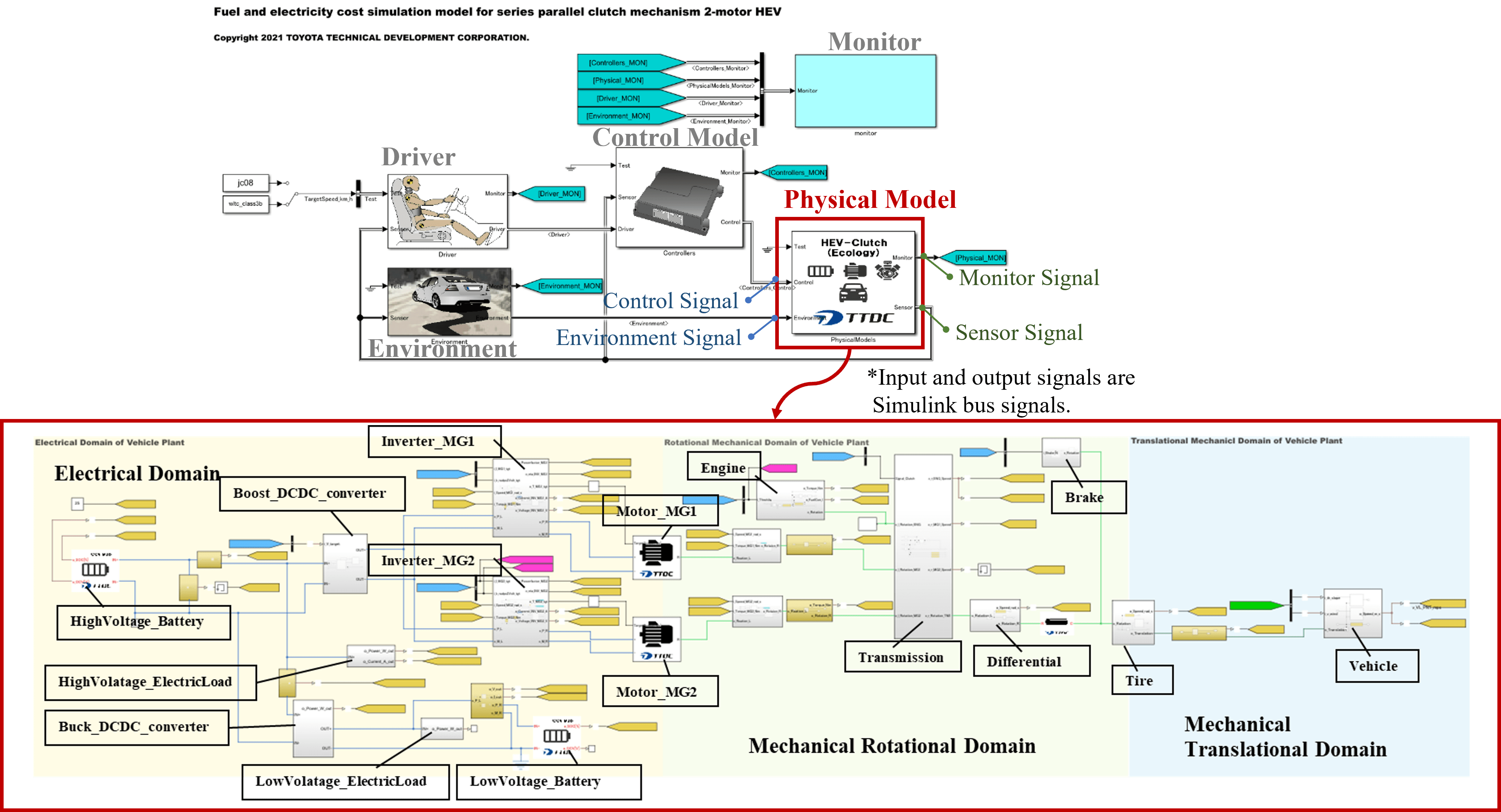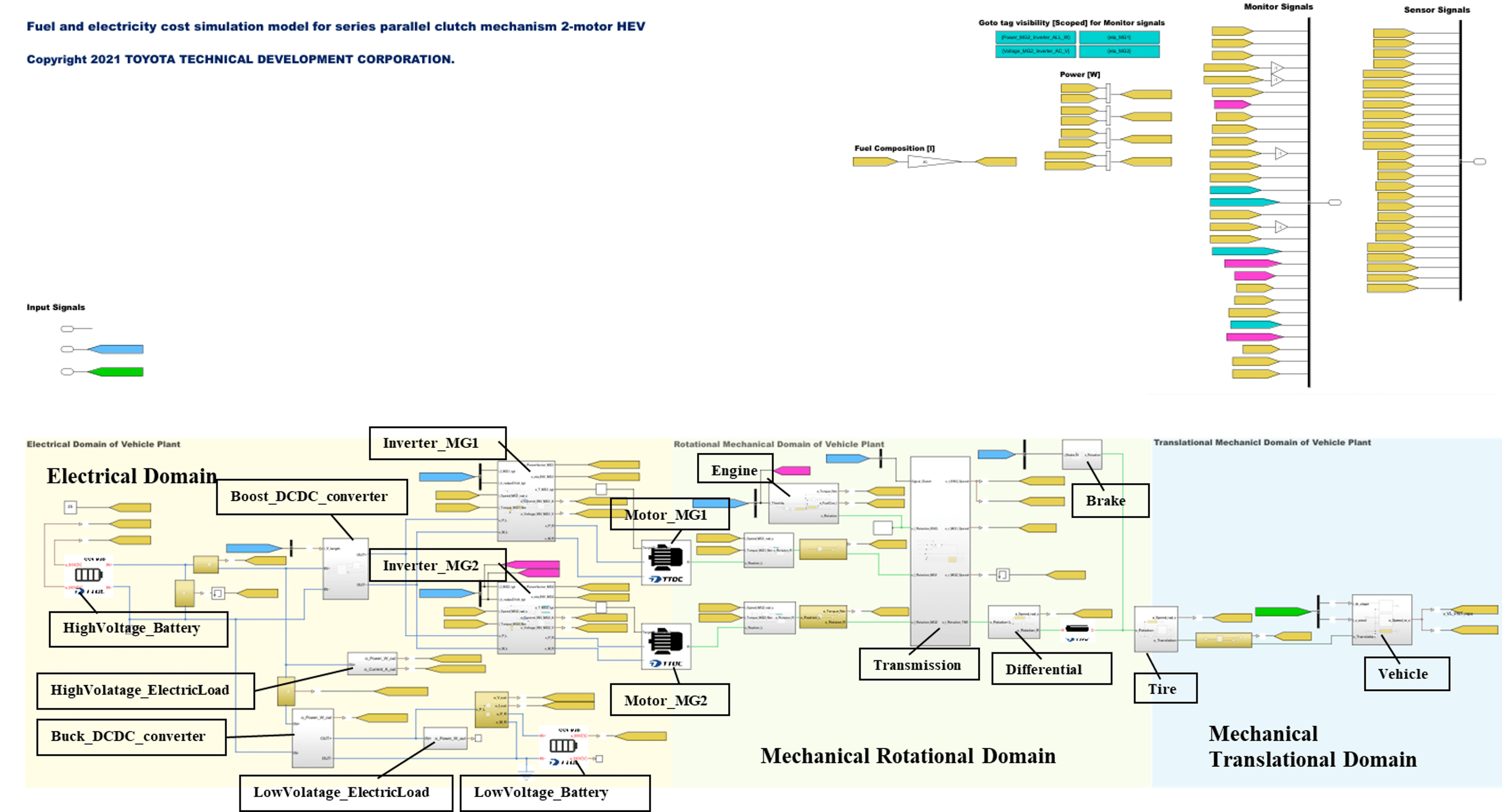Download
Ver. 1.1.0
for R2021a
This is a hybrid electric vehicle model with a series parallel clutch mechanism for simulating fuel and electricity cost.
It consists of two motors, an engine (displacement: 2.0 [L]), a clutch mechanism (transmission), a vehicle, a low-voltage battery, and a high-voltage battery as a power train system.
Control signals (throttle opening, control brake power, control current, control voltage (high voltage)) and environmental signals (road surface information, wind speed, etc.) are connected to the input ports.
Sensor signals (vehicle speed, Rotation speed, torque, current, voltage, power) and monitor signals are connected to the output port.
There is no external connection to the physical conserving port.
* This physical model can be connected to the control model, which is a case study model in “Plant Modeling I/F Guidelines for Vehicle Development” published by the Ministry of Economy, Trade and Industry of Japan.
It consists of two motors, an engine (displacement: 2.0 [L]), a clutch mechanism (transmission), a vehicle, a low-voltage battery, and a high-voltage battery as a power train system.
Control signals (throttle opening, control brake power, control current, control voltage (high voltage)) and environmental signals (road surface information, wind speed, etc.) are connected to the input ports.
Sensor signals (vehicle speed, Rotation speed, torque, current, voltage, power) and monitor signals are connected to the output port.
There is no external connection to the physical conserving port.
* This physical model can be connected to the control model, which is a case study model in “Plant Modeling I/F Guidelines for Vehicle Development” published by the Ministry of Economy, Trade and Industry of Japan.
How to connect:
Click to enlarge image
Internal configuration diagram:
The internal structure of this model is shown in the figure below.
Click to enlarge image
Operating environment:
Block diagram :
Click to enlarge image
Solver settings:
・ Global solver
- Solver: Arbitrary
- Sample time: Dependents on the setting value of the local solver
・ Local solver
- Solver: Backward Euler method
- Sample time: 2.5 msec
- Number of iterations: 3 times
- Solver: Arbitrary
- Sample time: Dependents on the setting value of the local solver
・ Local solver
- Solver: Backward Euler method
- Sample time: 2.5 msec
- Number of iterations: 3 times
Model constraints:
- This model does not simulate or guarantee the behavior and behavior accuracy of the actual machine.
- If the file structure in the library folder is changed, this model does not work.
- It may not work with other operating environments or solver settings than those listed above.
- It may not work with parameter sets other than those provided.
- The initial state is a stopped state.
- If the file structure in the library folder is changed, this model does not work.
- It may not work with other operating environments or solver settings than those listed above.
- It may not work with parameter sets other than those provided.
- The initial state is a stopped state.
How to execute:
1. Move the MATLAB current directory to the folder where the model files are located.
2. Execute the parameter file.
3. Open the model file.
4. Run the model.
2. Execute the parameter file.
3. Open the model file.
4. Run the model.
Download
Ver. 1.1.0
for R2021a
Ver. 1.1.0
for R2021a







